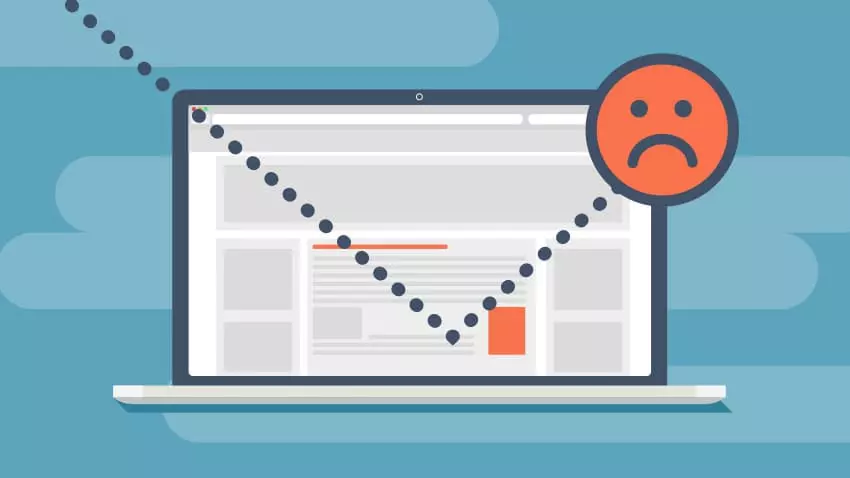Introduction
There are numerous reasons why people have SEO issues. Maybe it was not working earlier, not working right now, and it won’t even work because probably you are implementing SEO in the wrong way.
In this article, we’ll see the 5 best ways to resolve your SEO issues on your website.
What are the 5 best ways to resolve your SEO issues?
1. Spammy traffic

The issue with spammy traffic is that these are not the audience you want to attract to your website. Typically, those are not real visitors in any way.
When spammy traffic your website and begin getting reported on your Google Analytics data, they create your information incorrectly. You’ll also see your website’s average bounce rate turned relatively high because of spammy traffic.
Use proper keywords so that only the relevant audience looking for what you are offering comes to your website. Which will help you to reduce the spam score of your website.
2. Content

Your Content Has Gaps
Many times, we speak with customers who wish to drive Google visitors for specific keywords and topics. As soon as we perform a fundamental gap analysis on their site, we discover they have less content for the number of keywords they want to use.
So if you don’t have enough content for your keywords, then start looking for content relevant to your topic, and you can add in your content.
You Created Bad Content
The cause of your search engine optimization effort’s collapse is that your site isn’t putting out the articles that deserve the views of your audiences. The visitors to your site are decided by the viewership percentage of their target audiences. Your site will only be seen and surfed from the audience if they find it worth going through.
Ensuring your site is putting out great articles is a responsibility as a site owner. If your content isn’t first, plagiarism-free, and free of any grammatical mistakes, your viewers will start to abandon your website, which may lead to them not coming back. In general, you need to be sure your brand’s content is consumable and is of fantastic value to your viewers.
Content Is Not Optimized
Content optimization is most likely the easiest of those concerns about fundamental search engine optimization. Some rules to check are:
- The primary keyword should be present in the title tag.
- The primary keyword should be present in the H1 tag.
- The primary keyword should be present in the content of your website consistently.
- The primary keyword should be present in the Alt text of images.
- H1 must have subtopics as H2, and they should also have a primary keyword in them.
If your website does not follow the above rules, your website is not optimized.
Over-optimized Content
If your content is not optimized, then it could be over-optimized. For SEO, we are supposed to include keywords in our content, but if we include them way too many times, it will affect the ranking of the page, user experience, and readability.
To overcome that, read your content loudly, and if it doesn’t sound like how we usually speak, then it is over-optimized.
Content is Duplicated
With a growing number of brands using dynamically established sites, content management systems, and practicing global SEO, the issue of duplicate articles plagues numerous sites.
The problem with replicating content is that it might “confuse” search engine crawlers and stop the correct articles from being served for your intended audience.
To avoid duplication of content, try to write new content on your own, take ideas for your website from other websites but write it in your own words.
3. Slow Page Speed

In case your website does not load fast (usually 3 seconds or less than that ), your customers will go everywhere else. Website speed issues into the consumer experience and to Google.
Use Google Page Speed Insights to find any kind of speed issue with your website. (make sure you inspect the desktop in addition to mobile performance both.)
The solution to speed is different for all websites. Some are simple, and some are complicated. Standard website speed options may consist of picture optimization/compression, server response time advancement, and JavaScript minifying.
Talk to your web developer to ensure the best possible solution to your website’s specific page loading speed problems.
4. Keeping up with Google Algorithm update

Most website SEO strategists, marketers, and owners are frequently left baffled at the number of Algorithm upgrades that come from Google. As infamous they may be, unable to abide by the directives of those algorithms may result in the collapse of your SEO strategy.
As changes are made in the Algorithm of Google every year, you shouldn’t dismiss how these changes impact your website’s search results in positive ways. Today, make sure your site’s SEO effort matches the necessary Google Algorithm upgrades like Google Penguin, Panda, Hummingbird, Fred, etc.
5. High bounce rate
Another reason your website has SEO issues is probably that your website has a high bounce rate. You may check your website’s bounce speed by heading into Google Analytics and assessing your webpage metrics. If you don’t know, that if too many people leave your website, that will increase your bounce rate. This generally happens when the content is not relevant to the user.
Key Takeaway
A Search Engine Optimization audit shows a whole summary of site optimization and health. Assessing the very best technical problems and their respective options in this blog article is the very best method to rapidly enhance your website with no SEO issues. It will make the website’s consumer experience better.
I hope it was helpful for you!
Share your thoughts and view with us.



